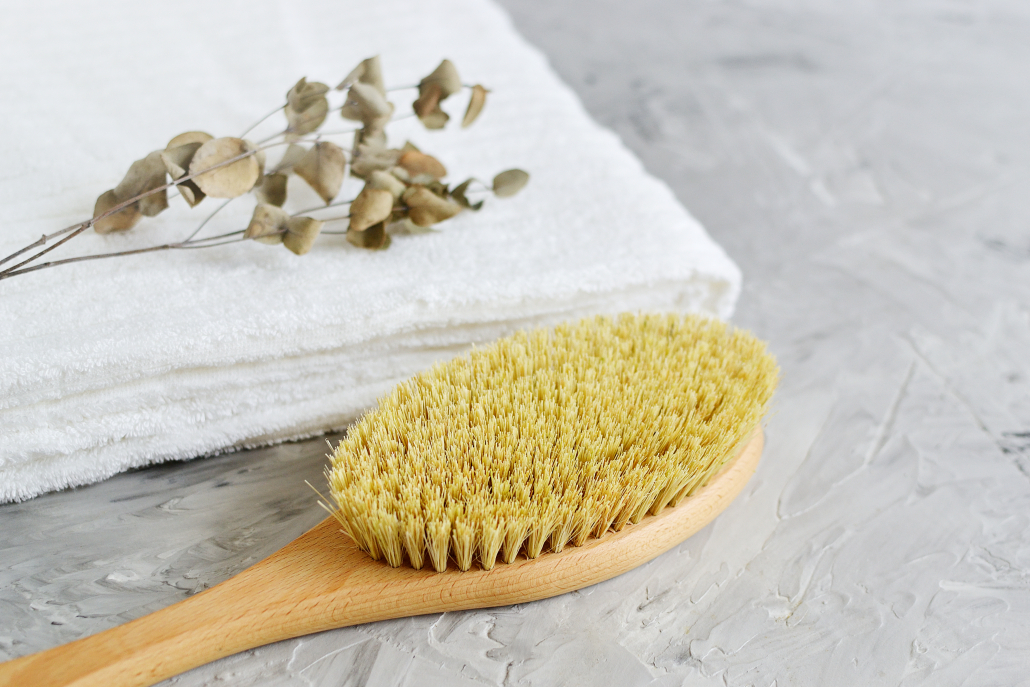The Revitalizing Art of Garshana: A Guide to Dry Brushing
Introduction to Garshana Garshana, commonly known as dry brushing, is a traditional Ayurvedic practice that revitalizes the body by stimulating the lymphatic system through a vigorous massage with wool, raw silk, or cotton gloves. This method not only enhances circulation and detoxification but also promotes skin health by exfoliating dead cells and stimulating new cell growth.
Historical Roots of Garshana Tracing its origins back to Siddha medicine—considered one of the world’s oldest medicinal systems—Garshana was introduced to South India by the revered sage Agastya. This practice is a testament to a lineage of wellness that may date back as far as 8,000 years. Across cultures, similar techniques have been employed for centuries; Ancient Egyptians used natural enzymes for skin care, the Chinese utilized loofahs made from dried gourd fibers, and Greeks and Romans opted for strigils combined with olive oil to cleanse and invigorate their skin before bathing.
Recommended Tools for Garshana To engage in Garshana, one may use:
- Raw silk gloves: Ideal for their gentle touch, recommended for Vata and Pitta body types.
- Wool gloves: Provide a firmer texture suitable for Kapha types.
- Terry gloves and copper brushes: Alternatives that cater to different sensitivities and preferences.
Health Benefits of Dry Brushing Engaging in Garshana can lead to multiple health benefits, including:
- Enhanced blood circulation and lymphatic drainage.
- Reduction of cellulite and expulsion of body toxins (ama).
- Increased energy and improved immune system function.
- Relaxation of the mind and stimulation of the body’s hormonal and oil glands.

Ideal Conditions for Dry Brushing Dry brushing is particularly beneficial for those experiencing:
- Muscle stiffness and aches.
- Neuralgia and fatigue.
- Poor blood circulation and digestive issues.
Precautions and Contraindications While beneficial for many, Garshana should be avoided on sensitive skin or areas affected by eczema, psoriasis, sunburn, or open wounds to prevent irritation.
How to Perform Garshana For optimal results, follow these steps:
- Preparation: Wear suitable gloves and start with the feet.
- Technique: Use long, upward strokes towards the heart, integrating circular motions at joints like ankles and knees.
- Coverage: Include all body parts, from limbs to the abdomen, back, and neck, finishing with gentle motions on the face and ears.
- Pressure: Apply light pressure on delicate areas and firmer pressure where the skin is thicker.
- Duration and Frequency: Typically, 10-15 minutes per session, varying from daily to a few times per week depending on your Dosha type.
- Timing: Best done in the morning, before showering or undergoing further Ayurvedic treatments.
Care for Your Tools Maintain the efficacy of your gloves and brushes by washing them regularly, ensuring they are dry and clean for each use.
Further Reading and References For those interested in deepening their understanding of Garshana and its benefits, consider the following resources:
- The Encyclopedia of Ayurvedic Massage by Dr. John Douillard.
- Healthline’s overview on Dry Brushing
- Garshana – Ayurvedic Dry Brushing by PAAVANI Ayurveda.
By integrating Garshana into your daily routine, you embrace an ancient tradition that promotes not only physical cleansing and rejuvenation but also a harmonious balance between mind, body, and spirit. This guide aims to make the practice accessible, practical, and beneficial to your overall well-being.
Disclaimer: The information in this blog post is provided for general informational purposes only and is not intended as medical advice. For personalized advice or treatment, please register as a patient at Radiance Healthcare, or consult with a qualified healthcare provider for any medical concerns.




